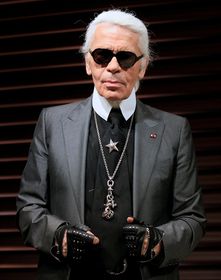Now that the biggest fashion event in the world—The Met Gala—is over, it is time to take stock of its theme, Karl Lagerfeld: A Line of Beauty. The gala, a fundraising dinner party that pays for all the excellent work the Metropolitan Museum’s Costume Institute does, takes place on the first Monday of every May and has top American and European celebrities togged up in costumes. This year’s theme has raised eyebrows ever since it was announced, as Lagerfeld has unarguably been the most controversial figure in fashion for decades. Yet the celebrities attending paid effusive homage, with Jared Leto and Doja Cat dressed as Lagerfeld’s pampered cat, Choupette.
Lagerfeld’s legacy has been coloured by comments that may have been considered witty once, but are unforgivable today. He has been called fatphobic, racist, Islamophobic and a misogynist. When a fashion label announced they were using curvy women on the catwalk, Lagerfeld quipped: “You’ve got fat mothers with their bags of chips sitting in front of the television and saying that thin models are ugly.” He called Adele “too fat” and Heidi Klum “too heavy”.
In a 2009 interview, he stated that Coco Chanel “wasn’t ugly enough to be a feminist”. In 2017, he criticised Angela Merkel for allowing the immigration of refugees from Muslim-majority countries, saying the migrants were “an affront to Holocaust victims”. He loathed models who wanted better working conditions, saying they should get a government job instead.
Lagerfeld was less human and more a German machine. He died at 85, with his boots on (and his famous starched white collars, sunglasses, and fingerless gloves). He became the world’s longest-serving fashion designer, having been with Chanel (among the oldest fashion labels in the world) for 35 years and with Fendi for almost 55 years.
At different points in his life, he helmed Balmain, Jean Patou, Chloe, Chanel, Fendi and his eponymous line. It was considered impossible that he could create several lines for Chanel, Fendi and KL each year as he did. His body of work was so vast and diverse, he became a factory himself. Lagerfeld’s schtick was being devoted to his trade, having his ear to the ground and continually meeting the demands of an insatiable fashion consumer.
Lagerfeld was no genius. His rivalry with Yves Saint Laurent from their first meeting at the 1954 Woolmark Prize ceremony is well documented. Saint Laurent had won in the evening gown category, and poor Lagerfeld won in the coat category. From then on, Lagerfeld’s ambition was boundless. He mocked smarts and originality, and stated, “The most important thing is to last”. Saint Laurent and he even shared a lover.
He was no Coco Chanel, among the most game-changing fashion designers and a rare female legend. Her casual elegance reset the woman’s wardrobe at the time. Chanel introduced timeless pieces that are now iconic, such as the Chanel suit, the quilted purse, the No 5 perfume, and costume jewellery. Lagerfeld understood he could never beat her at her game, so he began to play with her tools instead. He reinvented Chanel’s suit as a dress, playsuit or mini skirt. He sexualised Coco’s styles by shortening the skirt, padding the shoulder, raising the heel and exaggerating the pearls. When Lagerfeld came on, Chanel was a dying fashion brand. Lagerfeld made it chic again, and he made it one of the biggest luxury brands in the world.
At Fendi, he introduced rabbit and squirrel fur. His last collection for the Italian house was shown at the Milan Fashion Week mere days after he passed (February 2019). Lagerfeld’s legacy is not that of a founder of a great fashion house, but a moderniser of old brands.


